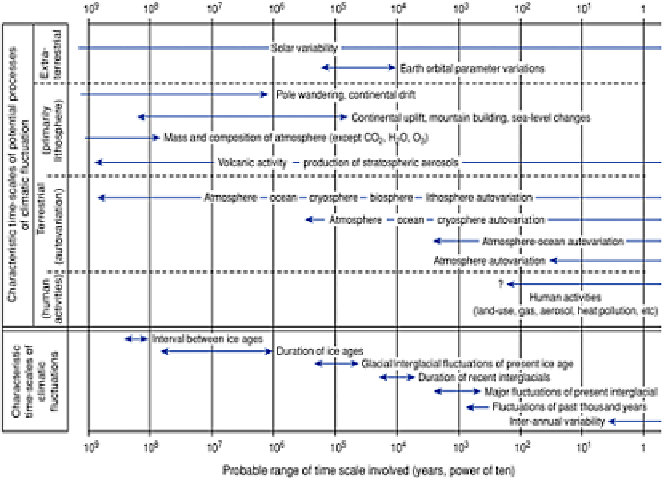Environmental Engineering Reference
In-Depth Information
Figure 9.17
Potential causative factors in climatic change
and the probable range of the time scale of change
attributable to each.
Some of the effects are more subtle, but none the less significant. As the pattern of
climate changes people tend to move if they are able; new areas become favourable,
others may become unfavourable. It has been suggested that the stimulus for the Viking
invasions and settlement of Iceland, Greenland and Britain was climatic deterioration in
Scandinavia. Nomadic tribes today respond to similar stimuli as grazing levels vary,
though political factors make international migration much more difficult.
The effects of climatic change are not confined to agriculture. As we shall see in later
chapters, fluctuations also influence landscape processes. Throughout the temperate
regions of the world the imprint of past climatic change is clear within the landscape.
Glacial landforms lie hundreds of kilometres beyond the limits of the present ice caps;
lakes which were at one stage huge inland seas are now small pools in comparison; river
valleys that once carried vast torrents of water are now occupied by small, generally
placid streams; fine, wind-blown silt and former sand dunes in currently moist areas
testify to the former strength of winds and presence of aridity. Effects of similar
magnitude can be detected in the vegetation. In many areas the range of plants that we
find today is a result of the migration and mixing of vegetation in response to climatic
changes. The global system, as we have noted before, is intricately interrelated. Changes
in one part affect others, and the effect is nowhere more apparent than in the influence of
a changing climate.

